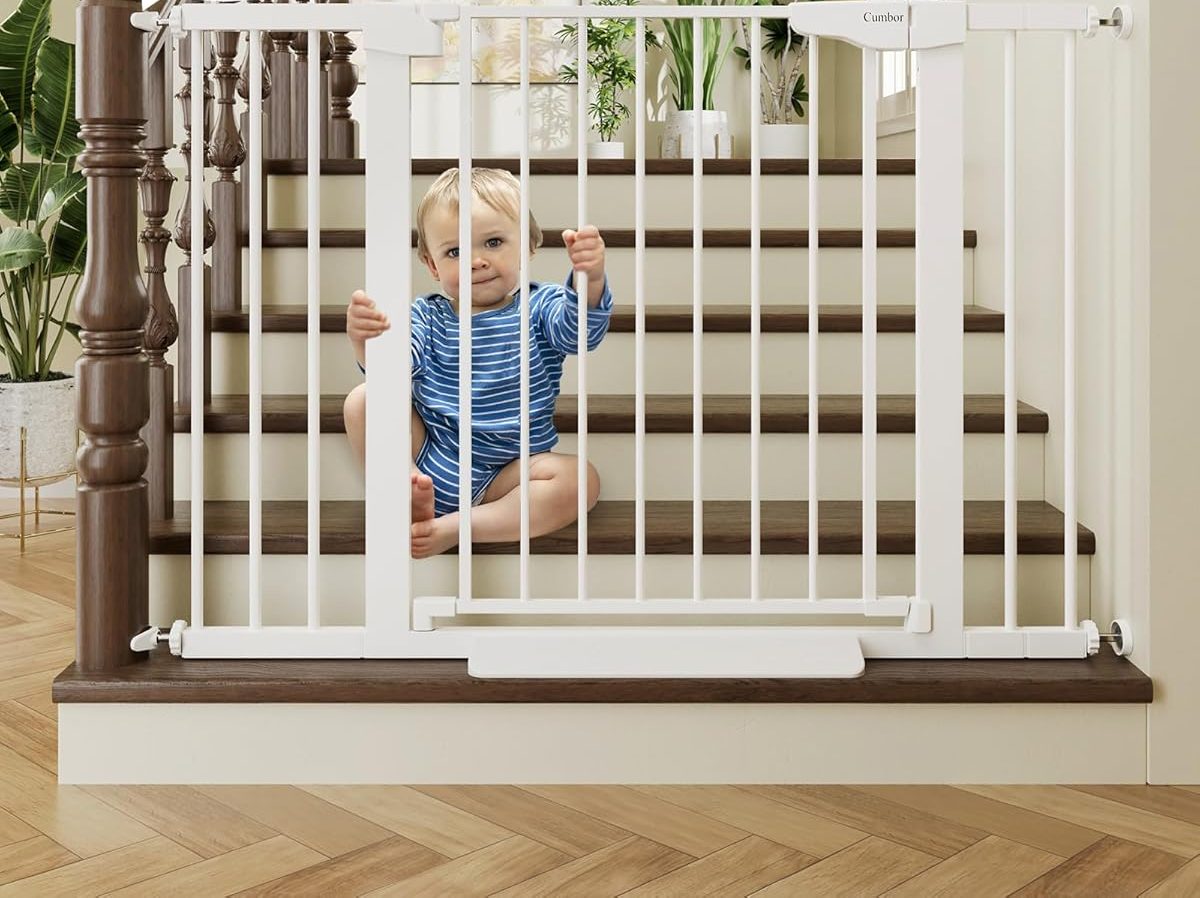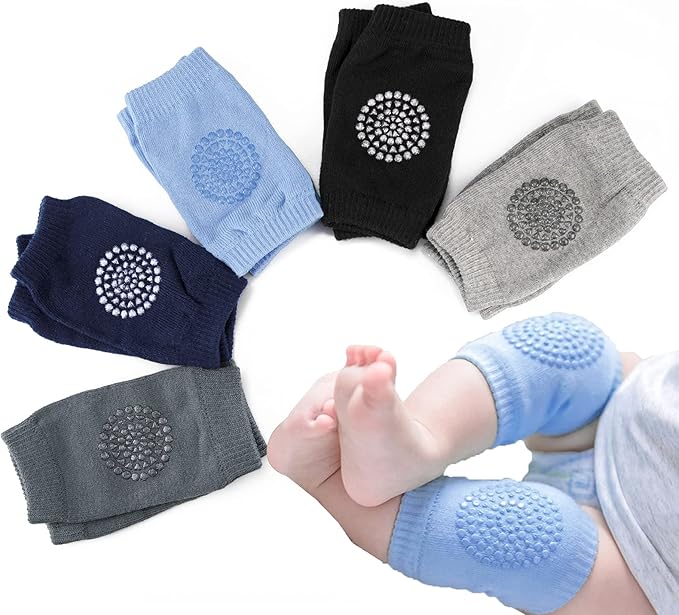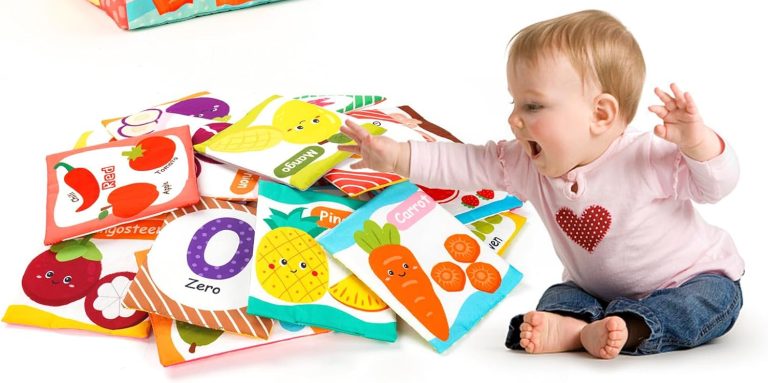When Do Babies Start Crawling? A Complete Parent’s Guide
Introduction: The Exciting Crawling Stage
Few milestones feel as thrilling for new parents as the moment their baby begins to crawl. This stage is often seen as the first real step toward independence — the point where your little one starts exploring the world on their own terms. Crawling isn’t just adorable; it’s an essential developmental phase that builds strength, coordination, and confidence.
But if you’ve ever found yourself wondering, “When do babies start crawling?” you’re not alone. The truth is, there’s no single “right” age. Some babies surprise their parents by crawling as early as 6 months, while others take their time and may not crawl until closer to 10 or 11 months. And yes, some babies skip crawling altogether and go straight to pulling up, cruising, and walking — which is completely normal.
Crawling is more than a way to get from point A to point B. It helps develop gross motor skills, strengthens core and shoulder muscles, improves balance, and even supports brain development by encouraging coordination between the left and right sides of the body. For parents, this milestone can be equal parts exciting and nerve-wracking — suddenly, your once-stationary baby is mobile and curious about everything.
In this guide, we’ll cover everything you need to know about crawling: when babies typically start, the different crawling styles, signs your baby is ready, tips to encourage safe crawling, and answers to common parent questions. By the end, you’ll know what’s normal, what’s not, and how to support your little one’s journey.
When Do Babies Typically Start Crawling?
On average, most babies begin crawling around 8 to 9 months old, but there’s a wide and completely normal range. Crawling is a major gross motor milestone, and like sitting or walking, it happens on each child’s unique timeline.
Early Crawlers (Around 6–7 Months):
Some babies start moving surprisingly early — scooting, commando-crawling on their bellies, or getting up on all fours before 7 months. These little movers often have strong upper-body muscles and lots of floor time to practice.
Typical Crawlers (8–10 Months):
Most babies fall into this range. Around this time, they can sit independently, support weight on their hands and knees, and rock back and forth before launching forward into a crawl. This “rocking” stage is a sign that crawling is just around the corner.
Later Crawlers (11 Months or Older):
Some babies take their time, especially if they prefer scooting, rolling, or pivoting on their bottoms to get around. Others may skip traditional crawling altogether and go straight to pulling up, cruising, and walking. This is usually not a cause for concern as long as they are meeting other developmental milestones and building strength in their arms and legs.
💡 Parent Tip: Don’t panic if your baby hasn’t started crawling by 10 or even 11 months. The key is steady progress in gross motor skills — like sitting without support, rolling both ways, and bearing weight on arms and legs. If you have concerns, talk with your pediatrician for reassurance and guidance.
Different Types of Crawling Styles
One of the most fascinating (and entertaining!) parts of this milestone is discovering how many ways babies can crawl. Not every baby follows the same pattern, and that’s completely normal. Here are the most common crawling styles you might see — each with its own unique charm and developmental benefits:
1. Classic Crawl (Hands-and-Knees)
This is the “textbook” crawl most parents picture — babies get on all fours and move one arm and the opposite knee forward in a rhythmic, alternating pattern. It’s great for building coordination between the left and right sides of the brain and strengthening core, arm, and leg muscles.
2. Commando or Army Crawl
Before mastering the classic crawl, many babies start with a belly-down approach — using their arms to pull themselves forward while their legs drag behind. This style builds upper-body strength and often appears first, sometimes as early as 6 months.
3. Bear Crawl
In this variation, babies keep their legs straight and hips high, crawling on hands and feet like a mini yoga “downward dog.” Bear crawling strengthens shoulders, wrists, and leg muscles and can be a sign your baby is preparing to transition to standing and walking.
4. Crab Crawl
Some babies prefer to move sideways or even backward, often with one leg tucked under their body. This style can look unusual but is completely normal and helps improve balance and coordination.
5. Bottom Scooting (or Bum Shuffling)
Instead of crawling, some babies stay seated and scoot forward using their hands and legs. This method is especially common on smooth floors and is often just as effective for getting around. Many “scooters” skip hands-and-knees crawling entirely and go straight to walking.
👉 Parent Reassurance: All of these crawling styles are normal and healthy. Some babies may try more than one before settling on a preferred method — or even switch styles depending on the floor surface. What matters most is that your baby is finding ways to explore their environment and practice movement skills.
Signs Your Baby Is Ready to Crawl
Crawling doesn’t usually happen out of the blue — there are several clear signs that your baby is gearing up for this exciting milestone. By paying attention to these cues, you can encourage and support their progress.
1. Sitting Independently
Being able to sit up without support is a major milestone — and one of the clearest indicators that crawling is on the horizon. When babies sit unassisted, it shows they’ve developed the core strength, balance, and coordination needed to control their upper body. This stability is crucial for getting into the hands-and-knees position and staying there long enough to experiment with movement.
Many babies will also begin to pivot or twist their bodies while sitting, reaching for toys just out of arm’s reach. This pivoting helps them practice shifting their weight — an essential skill for crawling. From here, it’s common to see babies place their hands on the floor, lean forward, and rock gently as they figure out how to coordinate arms and legs.
💡 Parent Tip: Encourage sitting practice by surrounding your baby with interesting toys in a safe, padded play space. This motivates them to reach, twist, and eventually tip forward into the crawling position.
2. Pushing Up During Tummy Time
If your baby can push their chest off the floor with straight arms — almost like a tiny push-up — it’s a strong sign they’re preparing for crawling. This movement shows that they’re building upper-body strength in the shoulders, arms, and chest, which are crucial for supporting their weight on all fours.
Pushing up also helps babies develop head control and improves their ability to look around, which encourages curiosity and movement. Over time, you may notice your baby shifting their weight from side to side or reaching for toys while in this position — an early form of practicing balance and coordination.
💡 Parent Tip: Make tummy time fun! Place bright, engaging toys just out of reach or get down on the floor face-to-face with your baby. The more they enjoy tummy time, the longer they’ll practice, which speeds up strength-building and prepares them for crawling.
3. Rocking on Hands and Knees
This is one of the most exciting pre-crawling milestones to watch! When your baby gets up on their hands and knees and begins rocking back and forth, it’s a clear signal that crawling is just around the corner.
This rocking motion is more than just cute — it’s how babies practice balance and weight shifting. Each gentle rock forward and backward helps them learn how to distribute their weight between hands and knees, building the confidence and muscle memory needed to launch forward. It also strengthens their core, arms, shoulders, and hips, preparing the entire body for coordinated movement.
Many babies will start experimenting from this position — lunging forward, scooting backward, or even attempting their first “mini crawl.” You may notice them rocking more vigorously as they get closer to taking off.
💡 Parent Tip: Give your baby plenty of safe floor space to practice. A soft play mat or carpeted area works well to cushion those first attempts. Placing a favorite toy just beyond reach can motivate them to take that first forward “step” on hands and knees.
4. Rolling Across the Room
Before crawling begins, many babies discover that rolling is a surprisingly effective way to get from point A to point B. Some even become little rolling experts, zipping across the room to reach toys, siblings, or anything that catches their eye.
Rolling is more than just a cute trick — it’s a crucial step in developing coordination, spatial awareness, and mobility skills. Each roll teaches your baby how to shift weight, engage core muscles, and plan their movements. These skills lay the groundwork for crawling by strengthening the same muscle groups that will soon support them on hands and knees.
Rolling also helps babies explore their environment, which boosts confidence and problem-solving skills. You might notice your baby rolling toward favorite objects or changing direction mid-roll, showing early signs of intentional movement.
💡 Parent Tip: Encourage rolling by placing colorful toys or soft books just out of reach and cheering them on as they roll to grab them. Make sure the play space is safe and free of obstacles so your baby can roll freely without bumping into furniture or sharp edges.
5. Lunging and Reaching for Objects
One of the clearest signs that crawling is around the corner is when your baby starts lunging or leaning forward to grab toys just out of reach. Whether they’re sitting independently or lying on their tummy, this forward-reaching movement shows that they’re learning how to shift weight and coordinate upper- and lower-body strength — two key skills for crawling.
Each lunge engages the shoulders, arms, and core muscles, helping your baby build the strength needed to support themselves on all fours. Often, these lunges turn into a “mini-launch” forward, where they end up on their tummy or briefly in a crawling stance before returning to sitting.
This reaching behavior also demonstrates problem-solving skills and growing determination. Your baby is learning that they can move their body to achieve a goal — a huge developmental leap toward independent mobility.
💡 Parent Tip: Make this skill-building fun by creating a “baby obstacle course” on a soft play mat. Scatter a few favorite toys at different distances to encourage your little one to reach, stretch, and eventually crawl toward them.
6. Improved Muscle Strength and Coordination
Every wiggle, kick, and push your baby does throughout the day is strengthening the muscles they need for crawling. Daily tummy time, floor play, and reaching for toys naturally build the arms, shoulders, back, and core — the powerhouse muscles that will eventually support their weight on all fours.
You may notice your baby holding themselves up longer during tummy time, pivoting in circles, or propping up on one arm while reaching with the other. These small but important changes show that their coordination and endurance are improving, making them more confident in exploring new positions like rocking on hands and knees.
💡 Important to Note: Every milestone builds on the one before it, but the timing is different for every child. Some babies develop the strength to crawl earlier, while others may focus on fine motor skills first. As long as your baby is steadily gaining strength and practicing new movements, they’re right on track.
How to Encourage Crawling Development
Helping your baby master crawling is one of the most rewarding parts of early parenthood. Here’s a step-by-step guide to encourage crawling development and give your little one the best start:
1. Prioritize Tummy Time
Tummy time is the foundation of crawling development. From the newborn stage, place your baby on their tummy for a few minutes several times a day, gradually increasing the duration as they grow stronger. This simple activity builds critical strength in the neck, shoulders, arms, and core — all muscles needed to hold their body up and coordinate crawling movements.
Make tummy time engaging by lying on the floor with your baby or using mirrors and colorful toys to capture their attention. The more fun tummy time is, the more likely your baby will enjoy it, which leads to more practice and faster strength-building. Consistent tummy time is one of the best ways to encourage crawling development naturally.
2. Create a Safe Play Space
Babies need a safe, open area to practice crawling. Set up a dedicated play space with a soft foam play mat or rug that cushions little knees and hands. Baby-proof the area by removing small objects, covering sharp corners, and securing electrical cords. A clutter-free, baby-friendly environment encourages exploration and gives babies the confidence to try new movements.
Avoid overly hard surfaces that may discourage crawling attempts or cause discomfort. A soft but stable surface helps your baby feel supported as they rock on hands and knees, scoot, and eventually crawl forward. This safe environment is essential when figuring out how to encourage crawling development while minimizing the risk of bumps or injuries.
3. Use Toys as Motivation
Babies are naturally curious, and toys are one of the best ways to motivate them to crawl. Place a favorite rattle, rolling ball, or light-up toy just beyond their reach to encourage them to scoot, stretch, and eventually crawl forward. This playful challenge teaches babies problem-solving skills and strengthens the muscles needed for crawling.
You can also create small “baby obstacle courses” with pillows or tunnels to make crawling practice more engaging. Interactive play not only helps with motor skill development but also keeps your baby entertained, making it a win-win for both of you. Toys are one of the simplest and most effective strategies for parents looking for how to encourage crawling development in a fun way. See article on Essential Toddler Toys for Early Development.
4. Encourage Floor Play (Limit Baby Gear)
While swings, jumpers, and baby seats are convenient, too much time in them can limit opportunities for practicing movement. Babies need time on the floor to experiment with shifting their weight, rolling, and getting into crawling positions. Encourage daily floor play sessions where your baby has room to explore naturally.
Try placing your baby in different positions — tummy, side, and sitting — to strengthen various muscle groups. These sessions improve balance and coordination, which are essential for crawling. Limiting baby gear use is one of the most practical steps in how to encourage crawling development, as it gives your baby the freedom to move and learn at their own pace.
5. Celebrate Small Wins
Every attempt your baby makes — from rocking on hands and knees to scooting forward an inch — is progress worth celebrating. Clap, cheer, and smile to let them know you’re proud. Positive reinforcement boosts their confidence and encourages them to keep practicing.
You can even turn crawling practice into a game by sitting a short distance away and calling your baby toward you. Your encouragement makes crawling exciting and rewarding, which can speed up progress. Celebrating these milestones is an important part of how to encourage crawling development because it keeps your baby motivated and happy.
Crawling Safety Tips
Once your baby becomes mobile, your home turns into a whole new world of discovery — which means it’s time to step up safety measures. Baby-proofing early can prevent accidents and keep exploration fun and stress-free. Here are essential crawling safety tips every parent should follow:
1. Always Supervise Floor Play
Even in a fully baby-proofed space, supervision is crucial. Babies are quick and curious, and they can find hazards you may have missed. Stay nearby during floor play so you can redirect them if they head toward unsafe areas or pick up small objects.
Supervised play also gives you the chance to encourage movement, interact, and cheer them on, turning crawling into a bonding experience. Remember, no baby gate or safety product replaces a watchful eye.
2. Install Baby Gates Near Stairs
Stairs can be dangerous for new crawlers. Install sturdy, hardware-mounted baby gates at both the top and bottom of stairways to prevent falls. Pressure-mounted gates can work well for doorways but aren’t secure enough for the top of stairs.
Check the gates regularly to ensure they’re secure and closed properly. Teaching your baby how to safely climb stairs (with supervision) as they get older can also help reduce risk. Buy on Amazon
3. Cover Electrical Outlets and Tuck Away Cords
Babies love to explore with their hands — and unfortunately, outlets and cords are at their level. Use outlet covers or sliding outlet plates to keep little fingers safe, and secure cords behind furniture or use cord organizers to keep them out of reach.
If you have chargers plugged in, unplug them when not in use to avoid potential shock hazards. A tidy, cord-free floor is both safer and more visually calming for your baby’s play space. Buy outlet covers for baby proofing on Amazon
4. Secure Heavy Furniture and TVs to Walls
Curious crawlers often pull up on whatever’s nearby, which means bookshelves, dressers, and TVs can become tipping hazards. Use wall anchors or anti-tip straps to secure heavy furniture and electronics.
This step is critical as your baby begins to cruise and stand — it prevents potentially serious accidents and gives you peace of mind as they explore.
5. Keep the Floor Clean and Clutter-Free
A crawling baby will find every crumb, coin, and tiny object on the floor — and likely put it in their mouth. Vacuum and sweep regularly to reduce choking hazards and keep the area hygienic.
Declutter play spaces so there’s plenty of room for safe movement. Store small toys for older siblings in bins or on shelves out of baby’s reach.
6. Use Soft Mats or Rugs to Protect Little Knees
Hardwood or tile floors can be uncomfortable for crawling. Use foam play mats, rugs, or carpets to provide a cushioned surface. This not only protects your baby’s knees but also reduces the impact of little tumbles.
Choose mats that are non-toxic, easy to clean, and large enough to give your baby space to explore. A dedicated crawling area can make daily practice more inviting and safe.
Crawling Milestones and Walking Timeline
Many parents find themselves asking, “When do babies start crawling?” The answer typically falls between 6 and 9 months, though there’s a wide range of normal. Some little ones start crawling early, around 6 months, often beginning with commando or belly crawls before transitioning to the classic hands-and-knees crawl. Others may prefer scooting on their bottoms or rolling to get where they want to go. Understanding when babies usually start crawling can give you peace of mind, but remember that every baby develops at their own pace. The important thing is that your baby is steadily gaining strength and showing interest in moving toward objects.
After the crawling milestone, babies often progress quickly to pulling themselves up to stand and “cruising” along furniture, which usually happens between 9 and 12 months. This stage builds balance, coordination, and confidence. Many parents notice that their baby becomes more adventurous, moving from one piece of furniture to the next, testing their ability to stand independently. Continuing to encourage crawling during this time is beneficial, as it strengthens the core and arms — key muscle groups for a smooth transition into walking.
By the time babies are between 12 and 15 months, most will take their first independent steps. Some babies crawl for just a few weeks before walking, while others spend 3 months or more perfecting their crawl. A few may skip crawling altogether and go straight to standing and walking — and that’s usually perfectly normal. What matters most is steady progress in gross motor skills. If you’re unsure when babies typically start crawling or walking, or if your baby seems delayed in hitting these milestones, check in with your pediatrician for guidance and reassurance.
Pros & Cons of Crawling Milestones
| Pros of Crawling | Cons / Challenges |
|---|---|
| Strengthens muscles needed for walking | Can be hard on clothing & knees |
| Improves coordination and balance | Increases risk of bumps and falls |
| Builds independence and confidence | Parents need to baby-proof early |
| Helps spatial awareness and brain development | Some babies resist floor time initially |
FAQs About Crawling
1. Do all babies crawl?
No. Some skip crawling entirely and go straight to walking. This is normal if other motor milestones are met.
2. Is late crawling a problem?
Not usually. Many healthy babies crawl after 10–11 months. Talk to your pediatrician if your baby isn’t sitting, scooting, or pulling up by 12 months.
3. Can babies crawl at 5 months?
Rarely. Some babies may attempt army crawling at 5–6 months, but it’s considered early.
4. How long do babies crawl before walking?
Most crawl for 2–3 months before taking first steps (usually between 12–15 months).
5. What if my baby crawls backward?
Totally normal! Many babies move backward before they figure out how to go forward.
6. Does crawling style affect walking?
Not at all. Whether your baby scoots, crab-crawls, or bear-crawls, they’ll transition to walking when ready.
Additional Tips for Parents
Give daily floor time: Even 15–20 minutes a few times per day helps.
Go barefoot indoors: Bare feet help babies grip the floor and build balance.
Play alongside your baby: Get on the floor with them — babies love to imitate.
Be patient: Every baby develops at their own pace. Comparing to others often causes unnecessary worry.
Conclusion: Enjoy Every Wiggle and Crawl
Crawling is an exciting chapter in your baby’s journey toward independence. While most start between 6 and 10 months, the exact timing varies — and some may skip crawling altogether.
Whether your little one belly-scoots, bear-crawls, or goes straight to walking, each movement is a sign of healthy growth and motor development.
The best thing you can do as a parent is create a safe, supportive environment, give plenty of tummy time, and celebrate each tiny milestone. Before you know it, your crawler will be pulling up, cruising along furniture, and taking those magical first steps.
So enjoy this stage — it’s one of the most adorable, chaotic, and memorable parts of your parenting journey.




